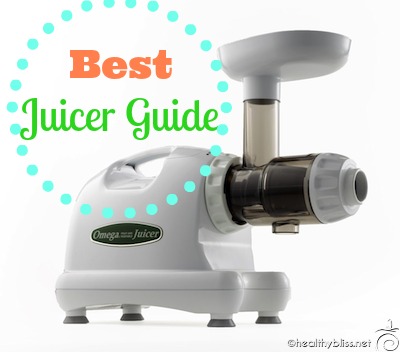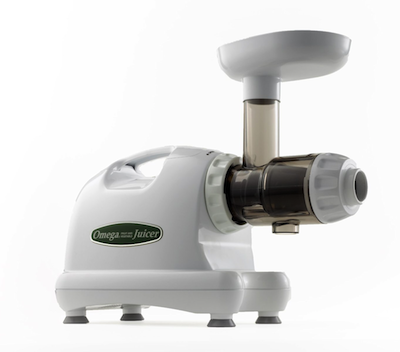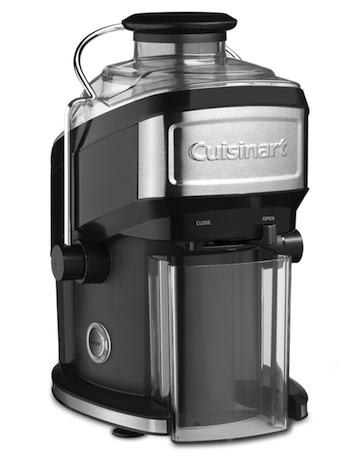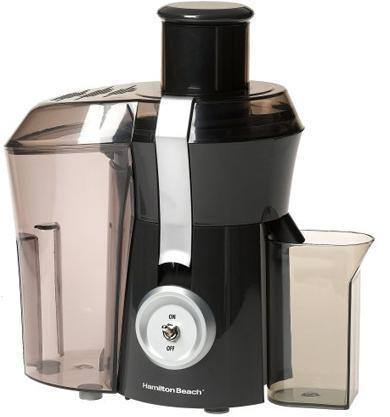What’s the Best Juicer? How to Choose a Juicer
Buying a juicer is a commitment to actually start juicing. Believe me, I wish there was a self-cleaning juicer out there too, but there isn’t! I consider this a more advanced stage of healthy food prep because of the added time and effort it takes to make juice. For that reason, I encourage you to really think about what you’re most likely to use on a daily basis. Do you have extra time to prepare ingredients for juice and to clean the juicer? Or, are you more likely to blend a green smoothie that takes less than 5 minutes to make and can be stored in advance?
I recommend that you make green smoothies for at least 6 months before you even think about advancing to the world of green juices. When you’re comfortable with the green smoothie recipes and ingredients, it will be much easier for you to make the leap into juice.
When you’re ready, the next step is to decide what juicer is right for you. And if that wasn’t enough, there are actually 2 different types of juicers. If you’re not ready then take this information in as a side note, to be used at a later date, but don’t worry about the details too much now. Below, I explain the different types of juicers.

What to look for in a juicer
Features to look for in a juicer
With juicers, there are two main types: masticating and centrifugal. Those terms describe how the ingredients are mashed, spun and/or pressed and actually separated between a fiber and liquid form.
The other main feature to look for in a juicer is the size of the shaft where you place the ingredients for juicing. You will see some juicers listed as big mouth or wide mouth; that means you can take an entire apple or pear and easily fit the whole fruit in the juicer shaft as opposed to cutting it into quarter-size pieces and placing it in a smaller shaft. While it may seem that this feature makes it faster or easier to juice, it doesn’t change the cleaning time which is the most time-consuming part of the process.
Masticating
Masticating juicers are the best juicers for making green juice because the slow-press motor can easily squeeze the juice out of high-fiber leafy greens. Sometimes referred to as cold-press juicers, masticating juicers operate at a slow speed and produce a higher amount of juice. Masticating juicers can juice fruits, veggies, leafy greens and wheatgrass. They are usually sold online or in more specialty stores and they come at a higher price tag.
Centrifugal
Centrifugal juicers are readily available at normal retail outlets and are the most inexpensive type of juicer to purchase. With a centrifugal juicer, the ingredients are pulverized through a fast-spinning blade that extracts the juice through a strainer. These machines can’t handle leafy greens, wheatgrass, sprouts or herbs and are better suited for fresh and veggies. Because of the faster spin, they make less juice per volume of ingredients.
Top picks for juicers
Omega
The Omega 8004 is my personal top pick of juicers for making green juice. It’s a masticating juicer, and in my opinion, is easier to clean than other masticating brands or models. The 8004 has a great motor and can also juice wheatgrass (see below). Price starts at $199.95.
Cuisinart
The Cuisinart Compact Juice Extractor is a centrifugal juicer that comes in at an affordable price with a nice design and a reliable brand name. Priced at $89.00.
Hamilton Beach
The Hamilton Beach Big Mouth Juice Extractor is also a centrifugal juicer with a nice clean, simple design. The fantastic price makes this juicer a great option if you’re on a budget. Priced at $59.85.
Keeping your Juicer Clean
My advice for how to clean your juicer is this: Do not drink your juice until after you clean the juicer! If you drink your juice immediately, you’re much more likely to move onto something else and forget about the juicer until later. By then, all the pulp will be stuck to the juicer parts making a bigger job to scrub everything clean.
Your best bet: As soon as you finish juicing, unplug the juicer to make sure that the power is off. Take the juicer apart and rinse all the pieces with a sponge, warm water and dish detergent. Add the juice pulp to your compost pile if you have one. Once your juicer is on the drying rack, you can enjoy your freshly made juice! This is a house rule in my kitchen and it really works.
Choosing a wheatgrass juicer
If you’re interested in juicing your own wheatgrass at home, you’ll need a masticating juicer. The Omega 8004 is a great model for making fresh wheatgrass. Other options include the Champion juicer, and the Hurom vertical slow-press juicer.







Do you need to juice, and should you be juicing?
That’s a great question! Find out more about whether or not you even need to juice here.
Looking for a new blender too? Check out my guide on Battle of the Blenders: Which one is best?
For more on how to start a raw food diet, how to do a detox at home or what minerals you may specifically be deficient in, book a private health consult with me via Skype.
How to Book Your Health & Nutritional Coaching Session:
1. Take photos of your eyes with a digital camera.
2. Email the photos to me for approval.
3. We schedule a time to meet via phone or Skype!
More on Juicing and Smoothies:




Follow Jennifer